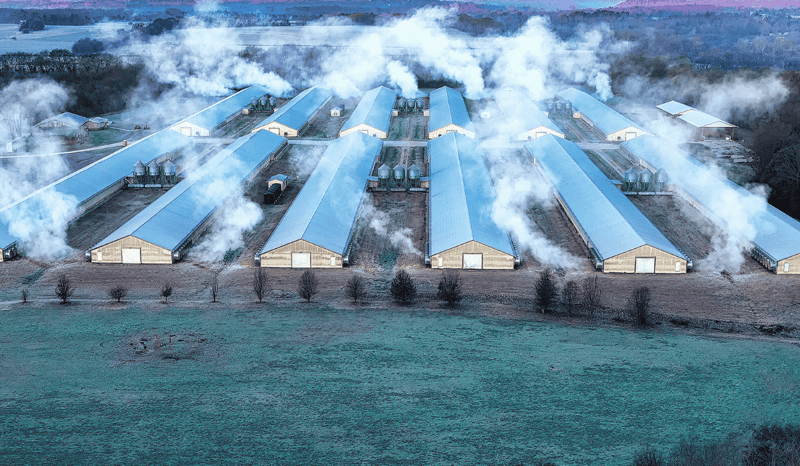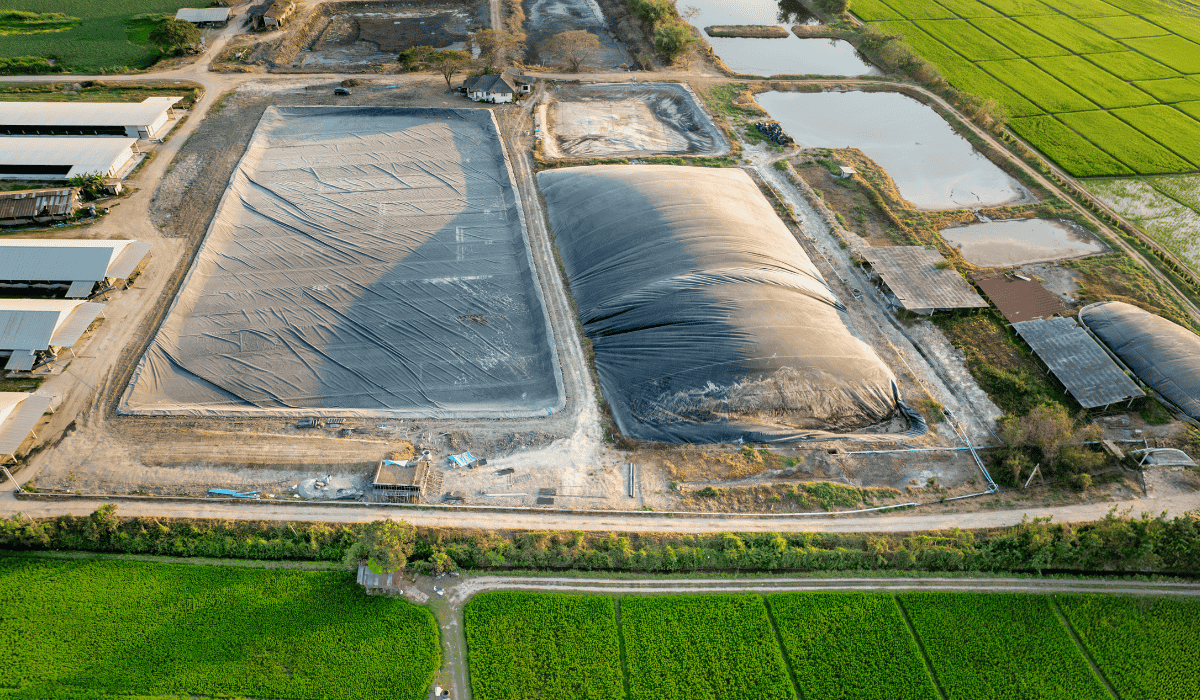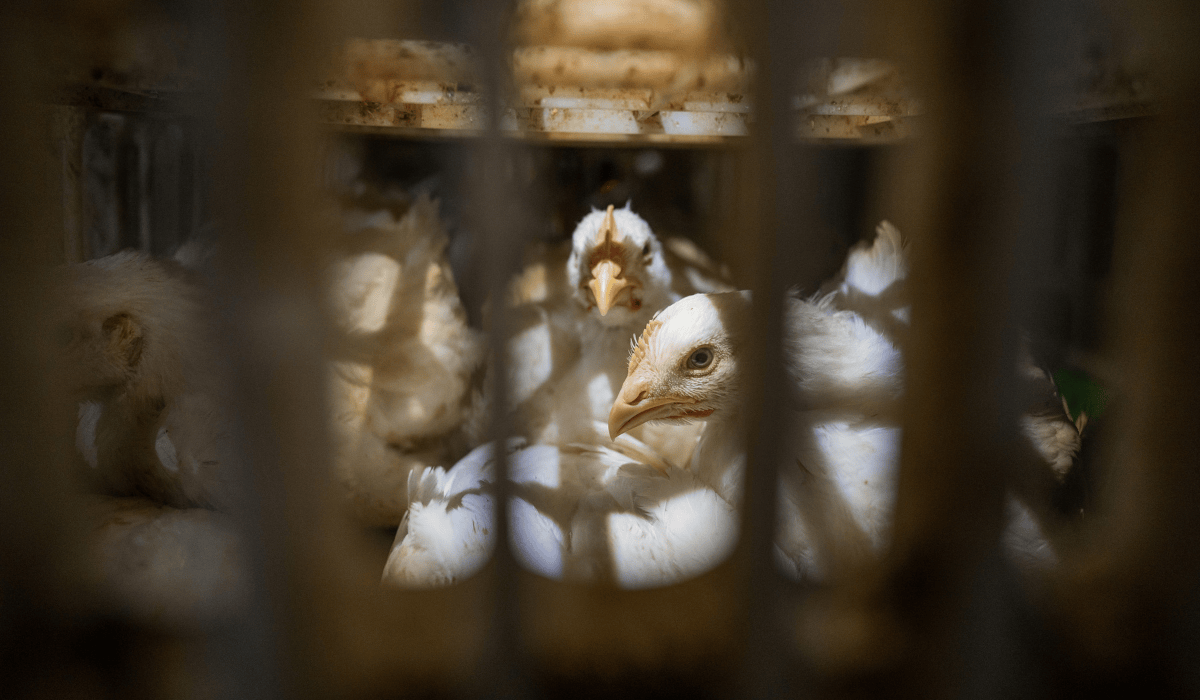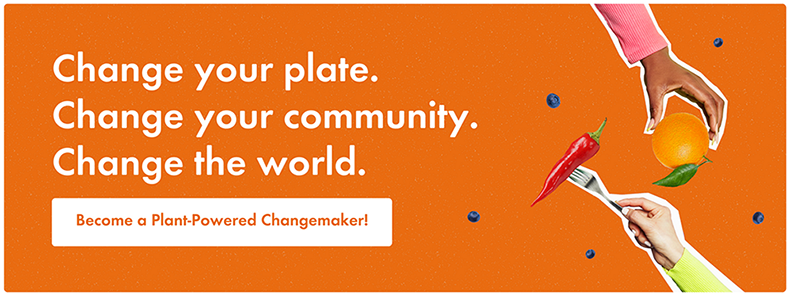
Everything you need to know about CAFOs and their impact on animals, the environment, and human health.
If you’ve ever driven past a sprawling industrial farm and seen long, low barns or crowded feedlots, you may have seen a CAFO—even if you didn’t know the name. CAFO stands for Concentrated Animal Feeding Operation, and it’s the term the US Environmental Protection Agency (EPA) uses to describe large-scale facilities where animals are raised in extremely high numbers for food production.
CAFOs come with significant consequences for animals, the environment, and public health.
What Does “CAFO” Mean?
A CAFO is defined by the number of animals confined in a single location for at least 45 days in a 12-month period without access to pasture. There are three general sizes (according to the EPA):
- Small CAFOs: 300–999 cattle, 200–699 pigs, or 9,000–29,999 chickens
- Medium CAFOs: 1,000–2,999 cattle, 3,000–9,999 pigs, or 30,000–99,999 chickens
- Large CAFOs: More than 1,000 cattle, 10,000 pigs, or 125,000 chickens
In the US, large CAFOs are the most common type, housing thousands—sometimes hundreds of thousands—of animals in one location.
Are CAFOs Factory Farms?

Yes—CAFOs are essentially the definition of factory farming. The term “factory farm” is often used to describe industrialized agriculture where animals are treated like units of production rather than sentient beings. CAFOs fit that description perfectly: they prioritize profit over animal suffering, environmental protection, and community health.
The difference between the two terms is mainly in who uses them. “CAFO” is the official regulatory term used by government agencies like the EPA, while “factory farm” is a more public-facing, descriptive term used by advocates, journalists, and the public to highlight the industrial and inhumane nature of these operations.
How Many CAFOs Are in the US?
- EPA tracking indicates there are more than 21,000 large CAFOs nationwide. Fewer than 6,300 of these currently hold permits under the Clean Water Act.
- Other estimates, like from the US Department of Agriculture (USDA) place the figure closer to 24,000–25,000 total CAFOs. Approximately 7 billion animals are in these factory farms at any given time.
Where Are CAFOs Located?
CAFOs are found in 47 of 50 US states—all except Alaska, Hawaii, and Rhode Island. The highest concentrations are in Iowa (~4,000), Minnesota (~1,400), North Carolina (~1,200), Nebraska (~1,200), and California (~1,080). North Carolina, in particular, has some of the densest clusters—especially hog operations—and is among the few states with publicly accessible CAFO location data.
Life for Animals in CAFOs

Animals in CAFOs live in extreme confinement. Chickens are often kept in crowded barns with no natural light. Pigs may be confined in gestation crates so small they can’t turn around. Cows may be packed into feedlots or barns without room to graze.
This lack of space prevents animals from performing natural behaviors like foraging, nesting, or dust bathing. Many suffer from injuries, disease, and chronic stress due to the conditions. Antibiotics are often used to keep animals alive long enough to reach slaughter weight, which contributes to antibiotic resistance in humans.
Environmental Impact of CAFOs
CAFOs generate enormous amounts of manure—more than can be absorbed by local farmland. This waste, often stored in large “lagoons,” can leak into waterways, contaminating drinking water and harming wildlife. Methane and other greenhouse gases from CAFOs contribute significantly to climate change.
Public Health Concerns
Living near a CAFO can have serious health consequences for communities. Air pollution from ammonia, hydrogen sulfide, and particulate matter can cause respiratory problems, headaches, and other illnesses. Water contamination can lead to dangerous bacteria and nutrient overload in local ecosystems.
A Better Way Forward
Reducing the demand for animal products is one of the most powerful ways to reduce the number of animals kept in CAFOs. Choosing plant-based meals and advocating for stronger animal protection laws all help move us toward a food system that values compassion over mass production.
Ready to get started? Join World Animal Protection’s FREE online community, Plant-Powered Changemakers, for tips, tricks, and vegan recipes!
